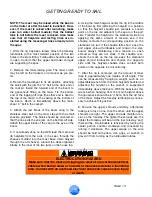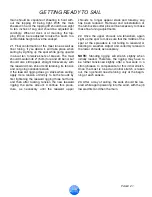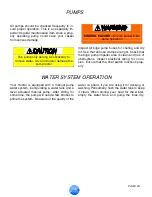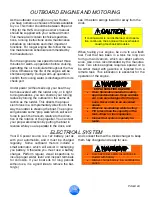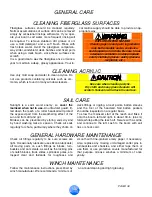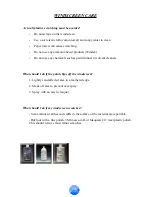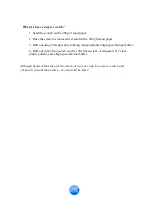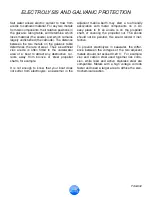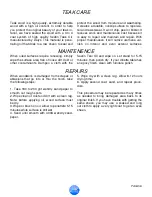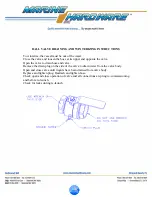
GENERAL CARE
CLEANING FIBERGLASS SURFACES
Fiberglass surfaces should be cleaned regularly.
Normal accumulations
of surface dirt can be removed
simply by occasional rinsings with water. If you oper-
ate your boat in salt water, more frequent rinsing will
be required. To remove stubborn dirt, grease or oil,
use a mild detergent and a soft brush. Rinse with
fresh clean water. Avoid the plexiglass companion-
way slider, windshield, deck hatches and fixed ports
when using a deck brush, since these surfaces can
scratch.
It is a good idea to wax the fiberglass once or twice a
year to maintain a deep, glossy appearance. Your lo-
cal marine supply should be able to provide an ap-
propriate wax.
EXPLOSION/FIRE HAZARD
Cleaning agents and paint ingredients
may be flammable and/or explosive,
and dangerous to inhale. Be sure to use
adequate ventilation, and appropriate
safety clothing (gloves, safety glasses,
respirator, etc.)
CLEANING ACRYLIC
Use only mild soap and water to clean acrylics. Do
not use products containing solvents such as am-
monia, which is found in many window cleaners.
Use care when cleaning acrylic.
Dry cloth and many glass cleaners will
scratch. Solvents will attack the surface
.
SAIL CARE
Sunlight is a sail’s worst enemy, so
cover the
mainsail when not in use.
An ultraviolet guard, fit-
ted down the leech of a roller headsail will protect
the exposed part from the weathering effect of the
sun and from dirt and grit.
Mildew, can be prevented by storing sails dry and
by hand washing twice a season. Check all sails
regularly for chafe, particularly where they chafe on
deck fittings or rigging, at reef points, batten sleeves
and the foot of the headsail. Sail batten pockets
should be inspected on a regular basis.
To stow the mainsail, start at the leech and flake it
onto the boom, left and right, in about 18-in. (46 cm)
folds, while pulling the leech aft. Secure with a sail tie
and continue to the luff. Lash to the boom with sail
ties or shock cord.
GENERAL HARDWARE MAINTENANCE
Check all fittings regularly to be sure screws are
tight. Occasionally lubricate (use silicone lubricants)
all moving parts on such fittings as blocks, turn-
buckles and cam cleats, as well as the locking pins
of snatch blocks, track slides, spinnaker poles, etc.
Inspect cleat and fairleads for roughness and
smooth with fine-grained emery paper if necessary.
Also, replace any missing or damaged cotter pins in
turnbuckles and shackles, and either tape them or
use them or use protective covers manufactured for
that purpose. Grease winches a minimum of once
yearly.
WINCH MAINTENANCE
Follow the maintenance instructions prescribed by
winch manufacturer. We recommend a minimum of
an annual cleaning and light greasing.
PAGE 30
Summary of Contents for HUNTER 25
Page 55: ...Power Squadron recommendations for maintenance and safe boating PAGE 13A 11...
Page 56: ...Local sailing club or marina s recommendations for maintenance and up keep PAGE 13A 12...
Page 58: ...Spare parts list PAGE 13A 14...
Page 59: ...Dates of practice drills and onboard safety inspections PAGE 13A 15...
Page 60: ...MY PERSONAL PREFERENCES FOR MAINTENANCE ITEMS SAFETY GEAR PAGE 13A 16...
Page 68: ......
Page 76: ......
Page 86: ......
Page 97: ......
Page 98: ......
Page 99: ......
Page 101: ......
Page 103: ......
Page 104: ......
Page 105: ......
Page 106: ......
Page 107: ......
Page 108: ......
Page 109: ......
Page 110: ......
Page 114: ......
Page 115: ......
Page 116: ......
Page 118: ......
Page 119: ......
Page 120: ......
Page 121: ......
Page 122: ......
Page 123: ......
Page 124: ......
Page 125: ......
Page 126: ......
Page 127: ......
Page 128: ......

